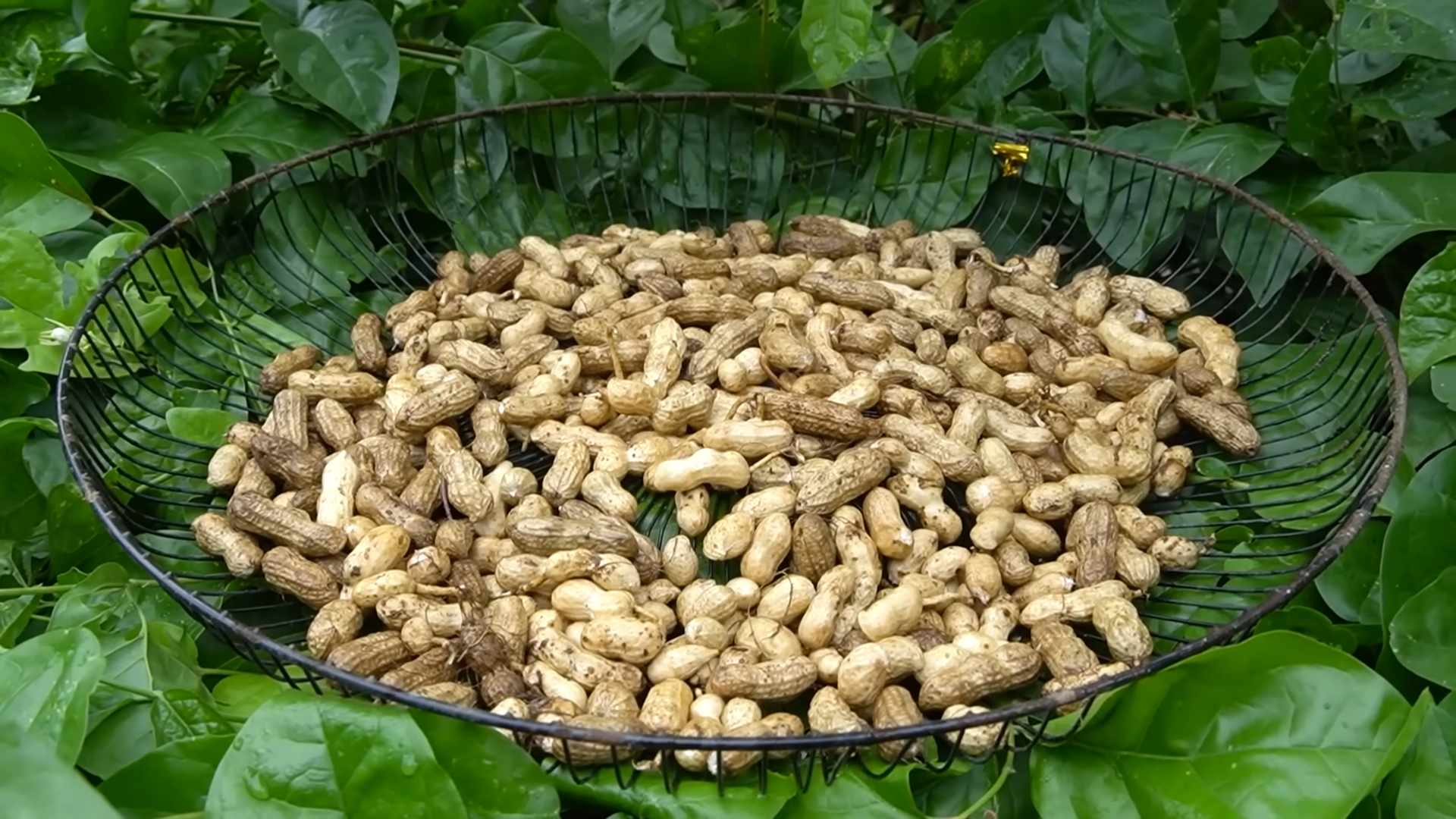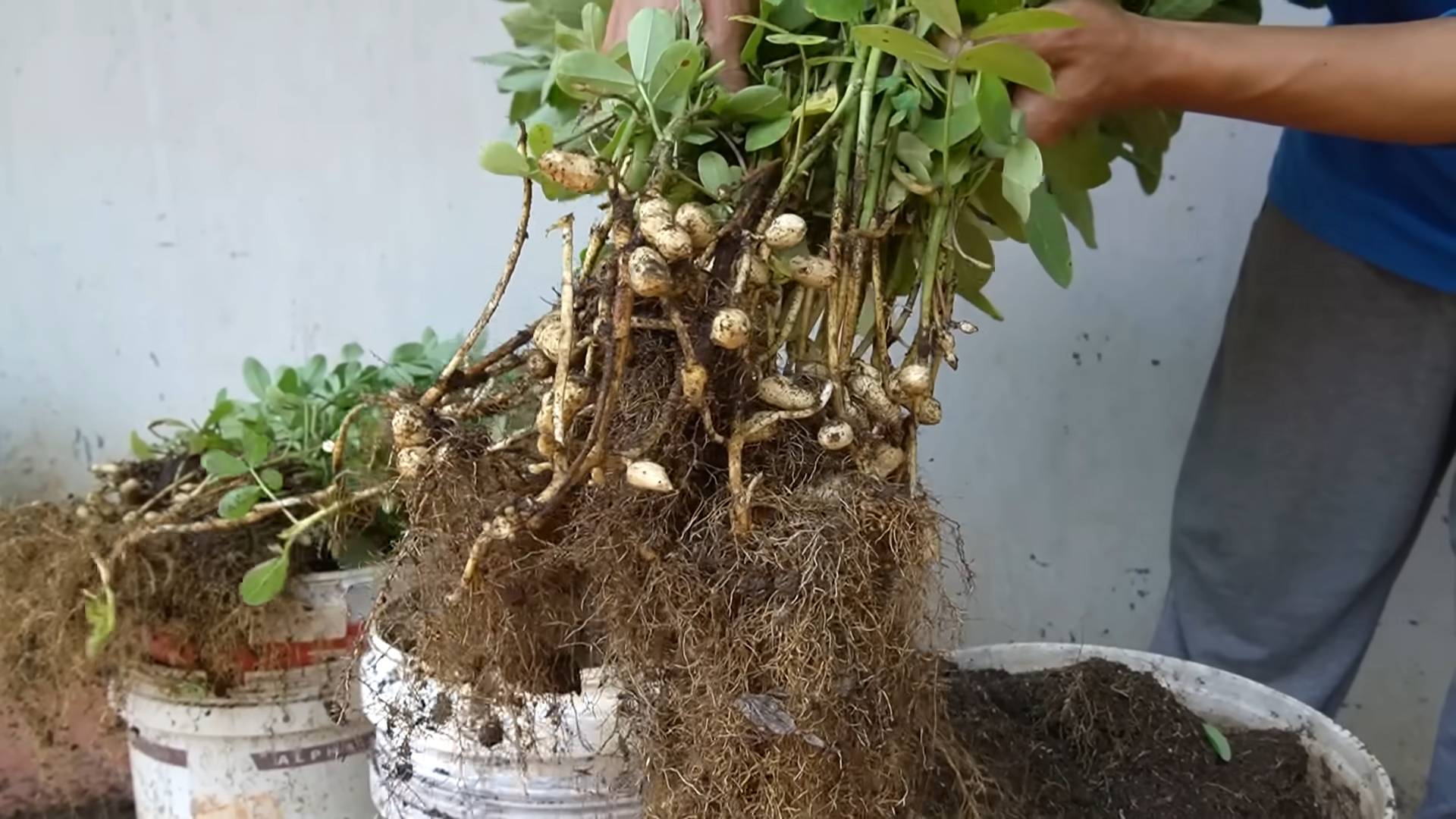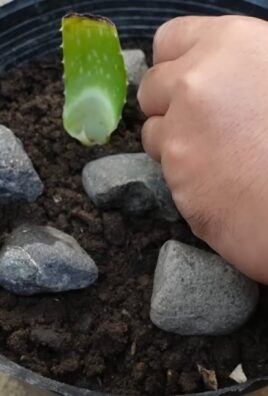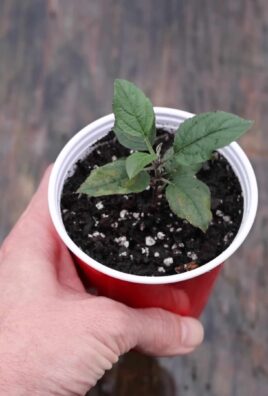Grow Peanuts at Home? Absolutely! Imagine the satisfaction of harvesting your own homegrown peanuts, ready to be roasted, turned into creamy peanut butter, or simply enjoyed as a healthy snack. Forget the store-bought variety – we’re diving into the wonderful world of cultivating these legumes right in your backyard (or even in containers!).
Peanuts, originating in South America, have a rich history, dating back thousands of years. They’ve been a staple food source and a symbol of prosperity in many cultures. Now, you can bring that history to your own garden! For centuries, peanuts have been a beloved and nutritious snack, and now you can experience the joy of growing them yourself.
Why should you embark on this DIY adventure? Well, for starters, you’ll know exactly where your food is coming from, avoiding any unwanted pesticides or additives. Plus, grow peanuts at home is surprisingly easy and rewarding! This DIY guide will provide you with simple, step-by-step instructions, ensuring a bountiful harvest. We’ll cover everything from choosing the right peanut variety to providing the optimal growing conditions. Get ready to impress your friends and family with your green thumb and enjoy the delicious fruits (or rather, nuts!) of your labor!

Growing Peanuts at Home: A Beginner’s Guide
Hey there, fellow gardening enthusiasts! Ever thought about growing your own peanuts? It might sound a little daunting, but trust me, it’s a super rewarding experience. Plus, nothing beats the taste of freshly harvested, homegrown peanuts. I’m going to walk you through everything you need to know to successfully grow peanuts right in your own backyard (or even in containers!).
Choosing the Right Peanut Variety
First things first, let’s talk about peanut varieties. Not all peanuts are created equal, and some are better suited for home gardens than others. Here are a few popular types:
* Virginia Peanuts: These are the large, often roasted peanuts you see at baseball games. They need a longer growing season (around 120-130 days).
* Spanish Peanuts: These are smaller peanuts with reddish-brown skins. They have a slightly nuttier flavor and a shorter growing season (around 100-110 days).
* Runner Peanuts: These are commonly used for peanut butter. They have a uniform size and a good yield. Their growing season is around 120-130 days.
* Valencia Peanuts: These are sweet peanuts, often with multiple peanuts per shell. They have a shorter growing season (around 90-100 days) and are great for boiling.
For beginners, I usually recommend Spanish or Valencia peanuts because of their shorter growing season. This gives you a better chance of success, especially if you live in an area with shorter summers.
Preparing Your Peanut Patch
Peanuts need a sunny spot and well-drained soil. Here’s how to get your garden ready:
* Sunlight: Peanuts need at least 6-8 hours of direct sunlight per day. Choose a location that gets plenty of sun.
* Soil: Peanuts prefer loose, sandy loam soil. Heavy clay soil can be a problem because the “pegs” (the stems that grow down into the soil to form the peanuts) have a hard time penetrating it.
* Soil pH: The ideal soil pH for peanuts is between 6.0 and 6.5. You can test your soil pH with a home testing kit or by sending a sample to your local agricultural extension office.
* Amendments: If your soil is heavy clay, amend it with plenty of organic matter, such as compost, aged manure, or peat moss. This will improve drainage and aeration. I like to add a generous amount of compost to my peanut patch before planting.
* Fertilizer: Peanuts are legumes, which means they can fix nitrogen from the air. However, they still benefit from a balanced fertilizer. I recommend using a fertilizer with a ratio of 5-10-10 (nitrogen-phosphorus-potassium) at planting time. Avoid over-fertilizing with nitrogen, as this can lead to excessive foliage growth and fewer peanuts.
Planting Your Peanuts
Now for the fun part – planting! You can start peanuts from raw, unsalted peanuts (the kind you find in the shell at the grocery store). Make sure they are raw, not roasted, as roasted peanuts won’t germinate.
1. Soaking the Peanuts: Soak the peanuts in water for 24 hours before planting. This will help soften the shells and speed up germination.
2. Shelling the Peanuts (Optional): You can plant peanuts in their shells, but shelling them will usually result in faster germination. Be careful not to damage the peanut kernels when shelling. I usually shell about half of my peanuts and leave the other half in their shells to see which method works best.
3. Planting Time: Wait until the soil has warmed up to at least 65°F (18°C) before planting. This is usually a couple of weeks after the last frost.
4. Planting Depth and Spacing: Plant the peanuts about 1-2 inches deep and 6-8 inches apart in rows that are 2-3 feet apart.
5. Watering: Water the peanuts thoroughly after planting. Keep the soil consistently moist until the seedlings emerge.
Caring for Your Peanut Plants
Peanuts are relatively low-maintenance plants, but there are a few things you can do to help them thrive:
* Watering: Water regularly, especially during dry spells. Peanuts need about 1 inch of water per week. Avoid overwatering, as this can lead to fungal diseases.
* Weeding: Keep the area around your peanut plants free of weeds. Weeds compete with peanuts for nutrients and water. I like to use mulch to suppress weeds and retain moisture.
* Hilling: When the peanut plants are about 6 inches tall, hill the soil around the base of the plants. This will encourage the “pegs” to enter the soil and form peanuts.
* Calcium: Peanuts need calcium to develop properly. If your soil is deficient in calcium, you can add gypsum (calcium sulfate) to the soil.
* Pest Control: Peanuts are generally pest-resistant, but they can be attacked by aphids, spider mites, and leafhoppers. You can control these pests with insecticidal soap or neem oil. I prefer to use organic pest control methods whenever possible.
* Disease Control: Peanuts can be susceptible to fungal diseases, such as leaf spot and rust. To prevent these diseases, avoid overwatering and ensure good air circulation. You can also use a fungicide if necessary.
Harvesting Your Peanuts
Harvesting is the most exciting part! You’ll know your peanuts are ready to harvest when the foliage starts to turn yellow and the inside of the peanut shells are brown. This usually happens about 120-150 days after planting, depending on the variety.
1. Digging Up the Plants: Use a garden fork or shovel to carefully dig up the entire plant. Be gentle, as you don’t want to break off the peanuts.
2. Shaking Off the Soil: Shake off as much soil as possible from the plants.
3. Drying the Peanuts: Hang the plants upside down in a dry, well-ventilated place for 2-4 weeks. This will allow the peanuts to dry properly. You can also spread the peanuts out on a screen or tarp to dry.
4. Threshing the Peanuts: Once the peanuts are dry, you can remove them from the plants. This is called threshing. You can do this by hand or by using a peanut thresher (if you’re growing a lot of peanuts).
5. Curing the Peanuts: After threshing, cure the peanuts for another week or two in a dry, well-ventilated place. This will improve their flavor and shelf life.
Roasting Your Homegrown Peanuts
Now that you’ve harvested and cured your peanuts, it’s time to roast them!
1. Preheating the Oven: Preheat your oven to 350°F (175°C).
2. Preparing the Peanuts: Spread the peanuts in a single layer on a baking sheet.
3. Roasting the Peanuts: Roast the peanuts for 15-20 minutes, or until they are golden brown and fragrant. Stir them occasionally to ensure even roasting.
4. Cooling the Peanuts: Let the peanuts cool completely before eating.
Growing Peanuts in Containers
Don’t have a garden? No problem! You can also grow peanuts in containers. Here’s what you need to know:
* Container Size: Choose a container that is at least 12 inches deep and 12 inches wide.
* Potting Mix: Use a well-draining potting mix. Avoid using garden soil, as it can be too heavy and compacted.
* Planting: Plant the peanuts as described above.
* Watering: Water regularly, especially during hot weather. Container plants tend to dry out more quickly than plants in the ground.
* Fertilizing: Fertilize every 2-3 weeks with a balanced liquid fertilizer.
* Sunlight: Place the container in a location that gets at least 6-8 hours of direct sunlight per day.
Troubleshooting
Here are a few common problems you might encounter when growing peanuts and how to fix them:
* Poor Germination: If your peanuts aren’t germinating, make sure the soil is warm enough and that you’re not overwatering. You can also try soaking the peanuts for a longer period of time.
* Yellowing Leaves: Yellowing leaves can be a sign of nutrient deficiency. Try fertilizing with a balanced fertilizer.
* Small Peanuts: Small peanuts can be caused by a lack of calcium. Add gypsum to the soil.
* Pest Problems: Control pests with insecticidal soap or neem oil.
* Disease Problems: Prevent diseases by avoiding overwatering and ensuring good air

Conclusion
So, there you have it! Growing peanuts at home is not only achievable but also a deeply rewarding experience. Forget the store-bought varieties that often lack that fresh, earthy flavor. With a little patience and these simple steps, you can cultivate your own supply of delicious, homegrown peanuts, bursting with natural goodness.
Why is this DIY trick a must-try? Because it connects you to your food source in a tangible way. It’s an opportunity to witness the miracle of nature unfold right in your backyard or even on your balcony. Plus, the taste of freshly harvested peanuts is simply unparalleled. You’ll be amazed at the difference compared to commercially grown options.
Beyond the superior flavor, growing your own peanuts offers a sense of accomplishment and satisfaction. It’s a fantastic project for families, teaching children about plant life cycles and the importance of sustainable practices. Imagine the excitement of digging up your first batch of peanuts, still warm from the earth!
But the benefits don’t stop there. You have complete control over the growing process, ensuring that your peanuts are free from harmful pesticides and chemicals. You can choose organic methods and nurture your plants with natural fertilizers, resulting in a healthier and more wholesome snack.
Looking for variations? Consider experimenting with different peanut varieties. Virginia peanuts are known for their large size and are ideal for roasting. Spanish peanuts are smaller and sweeter, perfect for candies and snacks. Runner peanuts are commonly used for peanut butter. Try planting a mix of varieties to discover your personal favorite.
Another exciting variation is to infuse your soil with beneficial microbes. These microscopic organisms can enhance nutrient absorption and promote healthier plant growth. You can purchase microbial inoculants at your local garden center or even create your own compost tea.
Don’t be afraid to get creative with your peanut harvest. Roast them with different spices, such as chili powder, garlic, or smoked paprika. Use them to make homemade peanut butter, peanut brittle, or even peanut flour for baking. The possibilities are endless!
We wholeheartedly encourage you to embark on this peanut-growing adventure. It’s a fun, educational, and ultimately delicious experience. And most importantly, it allows you to enjoy the unparalleled taste of fresh, homegrown peanuts.
Once you’ve harvested your first crop, we’d love to hear about your experience! Share your tips, tricks, and photos with us in the comments below. Let’s create a community of peanut-growing enthusiasts and inspire others to try this rewarding DIY project. What are you waiting for? Get planting and experience the joy of growing your own peanuts at home!
Frequently Asked Questions (FAQ)
What is the best time of year to plant peanuts?
Peanuts thrive in warm weather, so the best time to plant them is in the spring, after the last frost. The soil temperature should be consistently above 65 degrees Fahrenheit (18 degrees Celsius). In most regions, this typically falls between April and June. Planting too early can result in poor germination and stunted growth. If you live in a cooler climate, you can start your peanut seeds indoors a few weeks before the last frost to give them a head start.
What kind of soil is best for growing peanuts?
Peanuts prefer well-drained, sandy loam soil. This type of soil allows the peanut pegs (the stems that grow down into the soil and form the peanuts) to penetrate easily. Avoid heavy clay soils, as they can become compacted and hinder peanut development. The soil should also be slightly acidic, with a pH between 6.0 and 6.5. Before planting, amend your soil with compost or other organic matter to improve drainage and fertility.
How much sunlight do peanuts need?
Peanuts require at least 6-8 hours of direct sunlight per day. Choose a planting location that receives ample sunlight throughout the growing season. Insufficient sunlight can lead to weak plants and reduced peanut production. If you’re growing peanuts indoors, use grow lights to supplement natural sunlight.
How often should I water my peanut plants?
Peanuts need consistent moisture, especially during the flowering and pegging stages. Water deeply and regularly, ensuring that the soil remains moist but not waterlogged. Avoid overhead watering, as this can promote fungal diseases. A soaker hose or drip irrigation system is ideal for delivering water directly to the roots. Reduce watering as the peanuts mature and the leaves begin to yellow.
How long does it take for peanuts to mature?
Peanuts typically take 120-150 days to mature, depending on the variety and growing conditions. You’ll know they’re ready to harvest when the leaves begin to yellow and the inside of the peanut shells are brown and veined. To test for maturity, dig up a few plants and check the peanuts. If the shells are firm and the kernels are plump, it’s time to harvest.
What are some common pests and diseases that affect peanuts?
Peanuts can be susceptible to various pests and diseases, including aphids, spider mites, leaf spot, and root rot. Regularly inspect your plants for signs of infestation or disease. Use organic pest control methods, such as insecticidal soap or neem oil, to control pests. Ensure good air circulation and avoid overwatering to prevent fungal diseases. Crop rotation can also help to reduce the risk of soilborne diseases.
Can I grow peanuts in containers?
Yes, you can successfully grow peanuts in containers, provided you choose a large enough container (at least 18 inches in diameter and 12 inches deep) and use a well-draining potting mix. Ensure that the container has drainage holes to prevent waterlogging. Container-grown peanuts may require more frequent watering and fertilization than those grown in the ground.
How do I harvest peanuts?
To harvest peanuts, carefully dig up the entire plant, being careful not to damage the peanuts. Gently shake off any excess soil and allow the plants to dry in the sun for a few days. Once the plants are dry, you can remove the peanuts from the vines.
How do I cure and store peanuts?
After harvesting, peanuts need to be cured to reduce their moisture content and improve their flavor. Spread the peanuts in a single layer on a screen or tray and allow them to air dry in a well-ventilated area for 2-3 weeks. Once the peanuts are fully cured, store them in an airtight container in a cool, dry place. Properly cured and stored peanuts can last for several months.
Can I roast my homegrown peanuts?
Absolutely! Roasting your homegrown peanuts is a delicious way to enjoy your harvest. Preheat your oven to 350 degrees Fahrenheit (175 degrees Celsius). Spread the peanuts in a single layer on a baking sheet and roast for 15-20 minutes, or until they are golden brown and fragrant. Be sure to stir them occasionally to ensure even roasting. Let them cool completely before enjoying. You can also boil your peanuts for a southern treat.





Leave a Comment